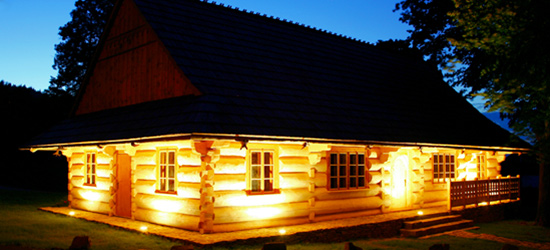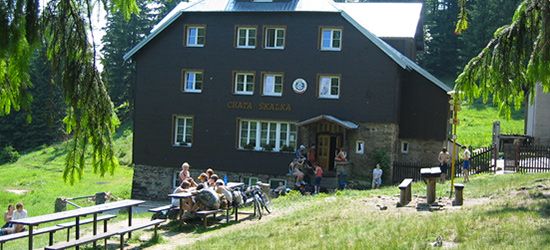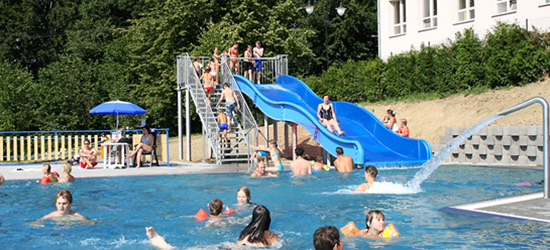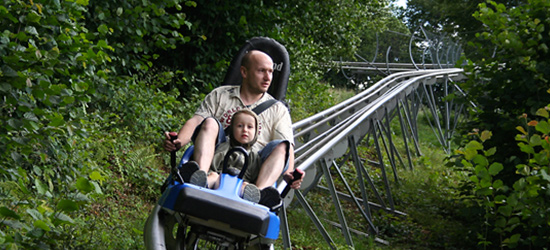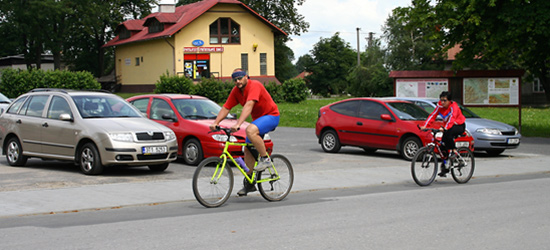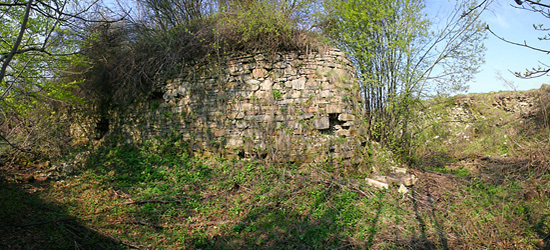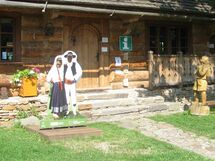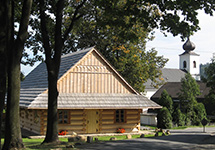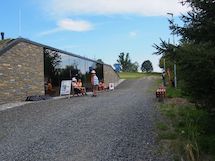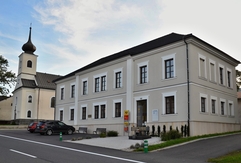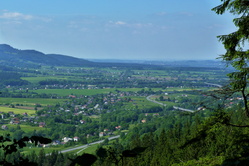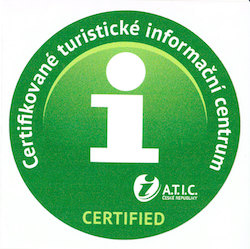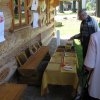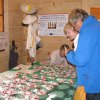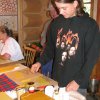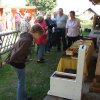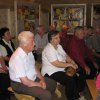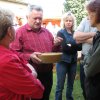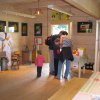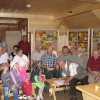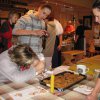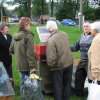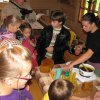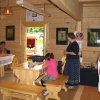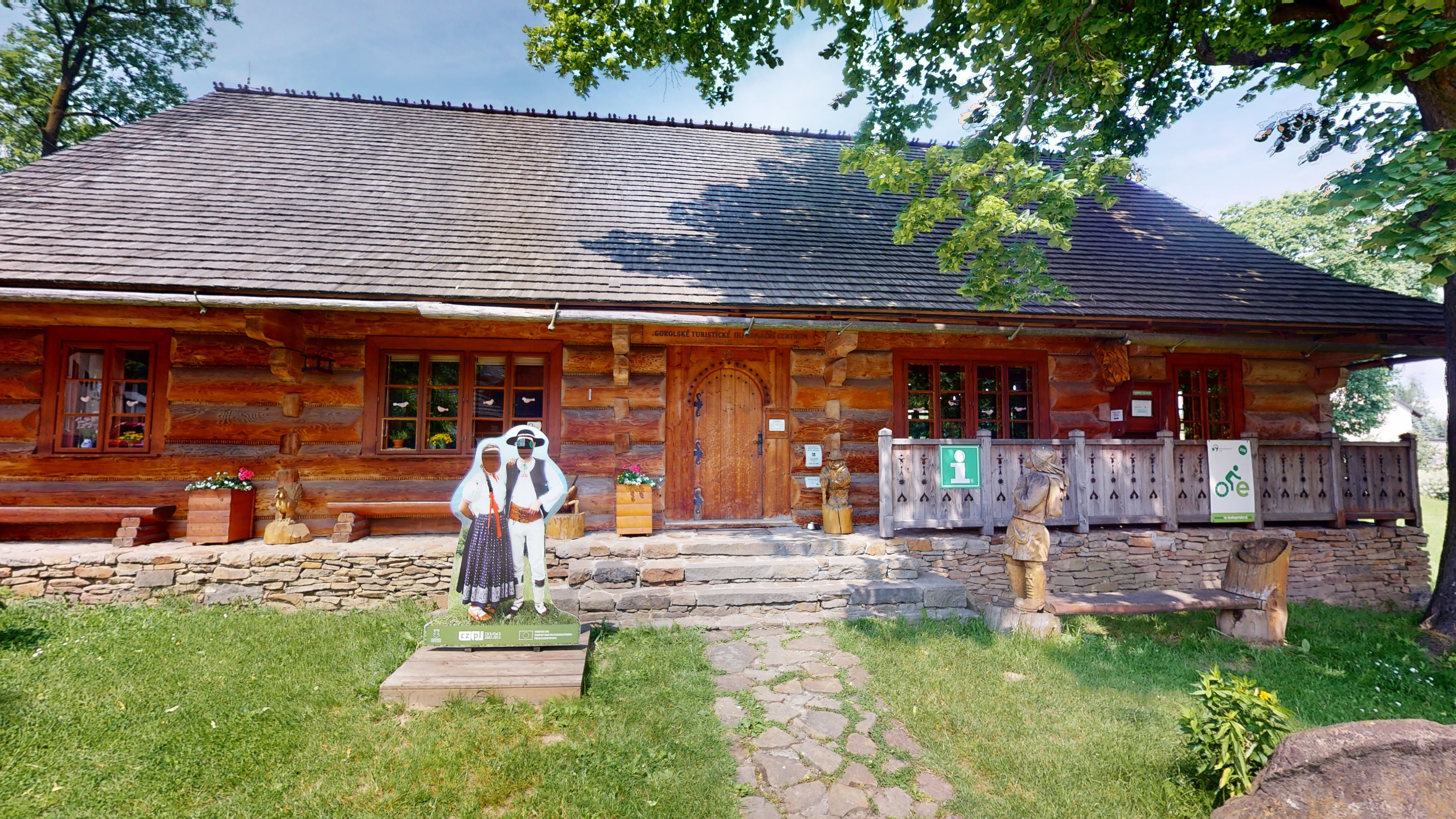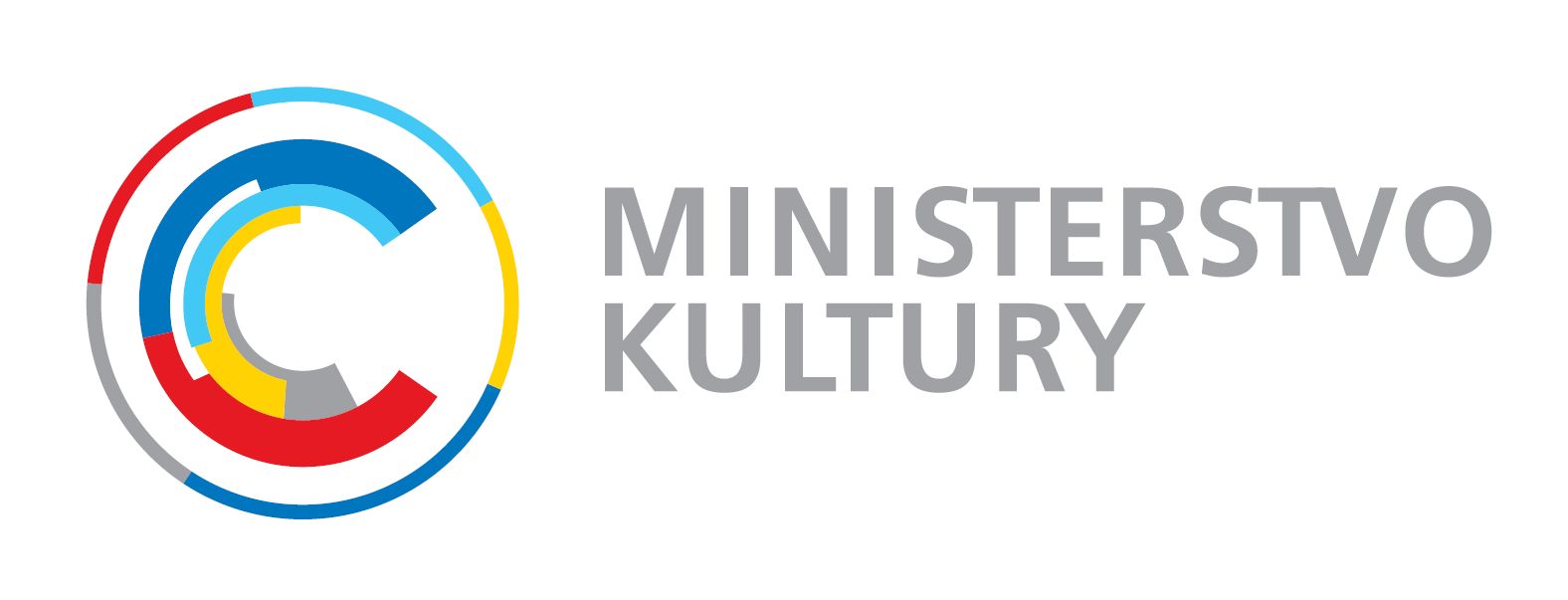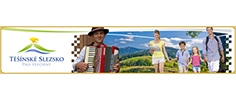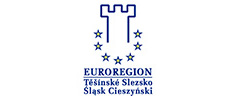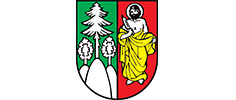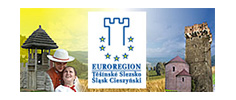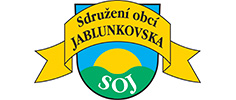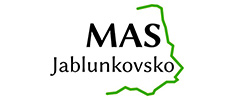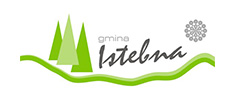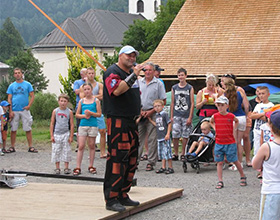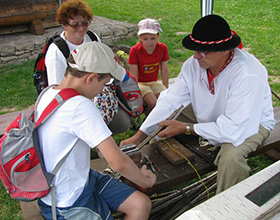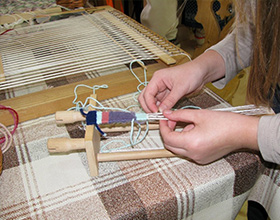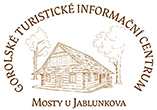Honey and bee-keeping
The Gorol Honey and Bee-Keeping Day is full of the wonderful aromas of honey and beeswax and the gentle buzzing of bees. You can decorate and take home a piece of honeyed gingerbread, meet bee-keepers or learn how to make your own wax candles.
The day also includes tastings of honey and honey products made by local bee-keepers, who will initiate visitors into the secrets of their ancient craft. There are also displays of modern and traditional, almost forgotten equipment for bee-keeping, wax-making and the production of honey. You can see a wax boiler and hand-press, beehives and various other bee-keeping equipment. The day also includes an exhibition and competition featuring items made by children, an exhibition of photographs of local bee-keeping, and a lecture on bee-keeping.
Honey-based drinks…
The Gorol Tourist Information Centre (GOTIC) sells a range of honey liqueurs, mead and honey throughout the year (not only at the Gorol Honey and Bee-Keeping Days). The honey liqueurs are very similar to the traditional local honey spirit-based drink ‘miodula’, which the Gorol people always used to make on special occasions. When hand-made, these liqueurs retain all the valuable medicinal properties of raw honey – strengthening the immune system, aiding digestion and generally acting as an excellent health tonic.
The twin queens of Silesia – Vařonka and Miodula
At traditional events in Mosty and throughout the Těšín Beskydy mountains, you will be able to sample two local spirit-based drinks – vařonka and miodula. They are the undisputed queens of traditional local drinks, and no special occasion or celebration would be complete without them.
Vařonka is a spirit-based drink flavoured with caramel and spices. It is made from sugar which is quickly moistened with cold water, placed in a dry pan and caramelized until golden. Then you pour in 0.75 litres of boiling water, add a 6 cm stick of cinnamon, lemon peel and the juice of a quarter of a lemon, 3–5 cloves, and boil it well. Then take the liquid off the heat and carefully pour in 0.25 litre of pure spirit, add 2 tablespoons of honey (optional) and mix. Traditionally vařonka was served hot, and crispy bacon pieces were sometimes added to it.
Miodula is a spirit-based drink flavoured with honey. It is easier to make than vařonka, but the honey (and of course the spirit) need to be of top quality. It is made by mixing 1 part honey, 1 part boiled water and 1 part spirit.
The patrons of bee-keepers and bees, and their historic achievements
Just as people have their own name-saints, professions also have their patrons. Many centuries ago, various guilds used to have depict their own saints on their banners, and would hold festivals and celebrations on their patron’s day. Bee-keepers were no exception – they also had their patrons who would protect them, their bees, and their work. Bees were never referred to as animals, but were talked about as if they were people. They are workers – and so when people passed a beehive they used to greet them: “God bless you, bees!”
- St John the Almsgiver (*550), 23 January: once when Bishop John fell asleep in his garden, a swarm of bees came, landed on a branch and built a small honeycomb near his right hand. They foretold that he would be merciful, and he was.
- St Valentine, 14 February: on St Valentine’s day bee-keepers throughout France would say a special mass thanking God for a bountiful year and the abundant food for their bees. They would bring straw beehives into the church. After the mass there would be celebrations at which mead was drunk.
- St John the Baptist, 24 June: the patron saint of bee-keepers
- St Claire, 1 August: Born in Assisi in 1194, St Claire is the only saint who was actually a bee-keeper. She loved flowers, which she grew in order to decorate the altar, and she also cultivated other plants which were visited by bees. She was well aware of the health-giving qualities of honey. She is honoured by bee-keepers throughout Italy.
- St Bernard, 20 August: a renowned protector of bees and bee-keepers. He established many monasteries and recommended that they become involved in bee-keeping. It is said that once a thief broke into the Bishop’s apiary, smashed up a hive and was planning to steal the honey, but the bees stung him so he fled to Bernard and asked for forgiveness. Bernard blessed him, and the bees returned to their hive.
- St Francis of Assisi, 4 October: Francis loved nature and bees. When a swarm came along, he would put them in straw baskets to protect them from the cold.
- St Ambrose, 7 December: one of the first patrons of bee-keepers. He is often depicted alongside a beehive and sometimes wearing a bee-keeper’s hat. He asked noblemen for assistance in developing bee-keeping in villages and on country estates.




